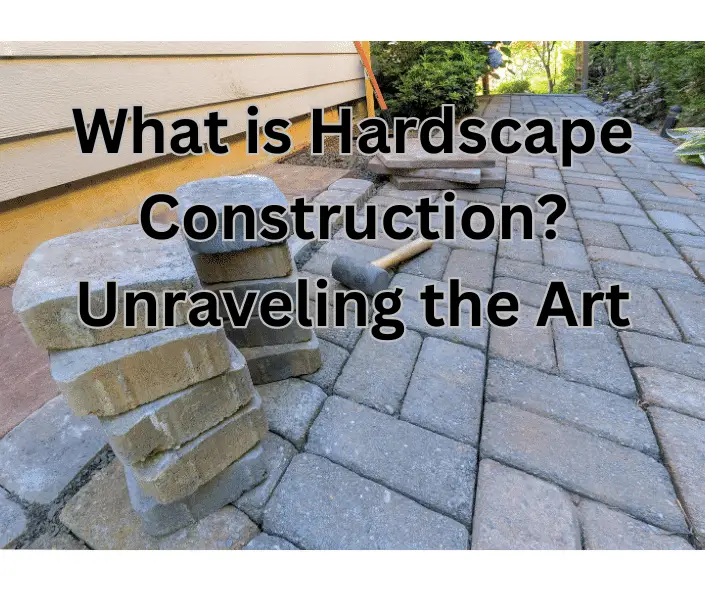Comprehensive Guide to Hardscape Construction
Hardscape construction is an essential aspect of landscaping that emphasizes the use of non-living elements to create functional and aesthetically pleasing outdoor spaces. This comprehensive guide delves into the world of hardscape construction, highlighting its various components, materials, design principles, and installation techniques. By exploring these aspects, you will gain a deeper understanding of hardscape construction and how it can transform your property into an outdoor haven.
What is Hardscape Construction?
Hardscape construction refers to the design, planning, and installation of non-living elements in a landscape. These elements include, but are not limited to, walkways, patios, retaining walls, outdoor kitchens, and water features. Hardscape construction provides both functionality and visual appeal to a landscape, often complementing its softscape counterparts—plants, trees, and flowers.
Hardscape Materials
A variety of materials can be used in hardscape construction, each offering unique benefits and aesthetic qualities. Common materials include:
- Concrete: A versatile and durable option for creating walkways, patios, and driveways.
- Brick: A classic choice for a timeless, traditional look.
- Natural stone: A popular material for creating unique, eye-catching designs.
- Pavers: A low-maintenance option that can mimic the appearance of natural stone, brick, or concrete.
- Gravel and crushed stone: Ideal for creating permeable surfaces and low-maintenance walkways.
- Wood: A natural material that can be used for decking and outdoor structures.
Design Principles for Hardscape Construction
Creating a successful hardscape design involves balancing various factors, including:
- Functionality: Consider how the space will be used, and design accordingly. For example, if you’re creating a patio, consider seating, dining, and entertainment needs.
- Scale and proportion: Ensure your hardscape elements are in harmony with the size of your property and existing landscape features.
- Balance and symmetry: Create a sense of balance by incorporating a mix of hardscape and softscape elements, as well as symmetrical and asymmetrical designs.
- Unity and repetition: Use consistent materials, colors, and patterns to establish a cohesive theme throughout your outdoor space.
- Focal points: Incorporate eye-catching features, such as waterfalls or fire pits, to draw attention and add visual interest.
Installation Techniques and Best Practices
Proper installation is crucial for the longevity and functionality of your hardscape. Key considerations include:
- Site preparation: Clear the area of debris, vegetation, and any obstacles before beginning construction.
- Grading and drainage: Ensure the area is properly graded to prevent water pooling and promote effective drainage.
- Base preparation: Lay down a suitable base material, such as crushed stone or gravel, to provide a stable foundation for your hardscape.
- Material selection: Choose high-quality materials that are suitable for your climate, and ensure they’re properly installed to prevent issues such as cracking or shifting.
- Maintenance: Regularly inspect your hardscape for signs of wear or damage, and address any issues promptly to prolong its lifespan.
The Difference Between Hardscape and Landscape
Hardscape and landscape are two distinct, yet interrelated, aspects of outdoor design that together contribute to a cohesive and functional outdoor space. While they are often used interchangeably, it’s important to understand their differences to create a balanced and harmonious environment.
Hardscape
Hardscape refers to the non-living, built elements of a landscape design. These components serve a functional purpose, such as providing structure, stability, and walkable surfaces, while also enhancing the aesthetic appeal of the space. Hardscape elements include:
- Patios
- Walkways
- Driveways
- Retaining walls
- Decks
- Pergolas
- Fences
- Outdoor kitchens
- Water features, such as fountains and ponds
- Fire pits and fireplaces
Hardscape materials can range from concrete, brick, natural stone, pavers, wood, and gravel to various other materials that suit the desired design.
Landscape
Landscape, on the other hand, encompasses the broader scope of outdoor design, including both hardscape and softscape elements.
Softscape refers to the living components of a landscape, such as plants, trees, shrubs, flowers, and grass.
These elements provide color, texture, and visual interest, while also contributing to the overall ecosystem and environment.
How to Landscape a Sloped Backyard on a Budget
Landscaping involves the planning, design, and maintenance of the entire outdoor space, taking into account aspects such as aesthetics, functionality, environmental factors, and overall harmony.
A well-designed landscape integrates hardscape and softscape elements seamlessly, ensuring that they complement each other and work together to create a beautiful, cohesive, and practical outdoor environment.
While hardscape focuses solely on the non-living, built aspects of an outdoor space, landscape encompasses a broader range of design elements, including both hardscape and softscape components.
By understanding the difference between hardscape and landscape, you can create a balanced outdoor design that caters to your functional needs while also enhancing the beauty of your property.
Conclusion
Hardscape construction is a vital component of landscape design that encompasses the planning, design, and installation of non-living elements in an outdoor space. By understanding the materials, design principles, and installation techniques involved in hardscape construction, you can create stunning, functional spaces that enhance the beauty and value of your property.
Author Profile

- I have many qualifications and certificates in construction, such as City & Guilds, CPCS and CITB. These are the highest standards of training and competence in the industry. Whether you need help with plumbing, carpentry, bricklaying or any other trade, I’m here to help you succeed.
Latest entries
- March 6, 2024CalculatorsWall Tile Calculator: How Many Wall Tiles Do You Need
- February 29, 2024Roof Truss Cost Calculator
- December 31, 2023Wage Take Home Calculator
- December 30, 2023Day Rate Calculator


Comments are closed.